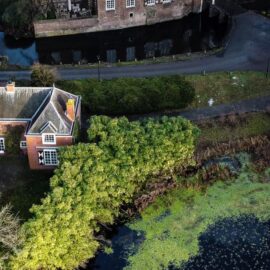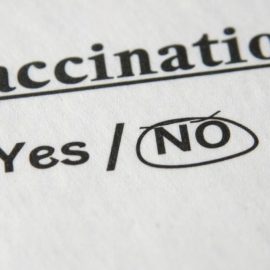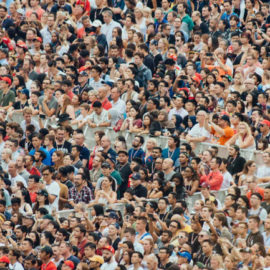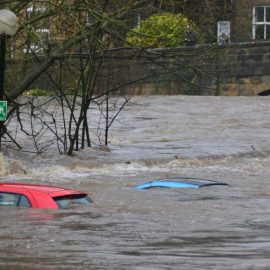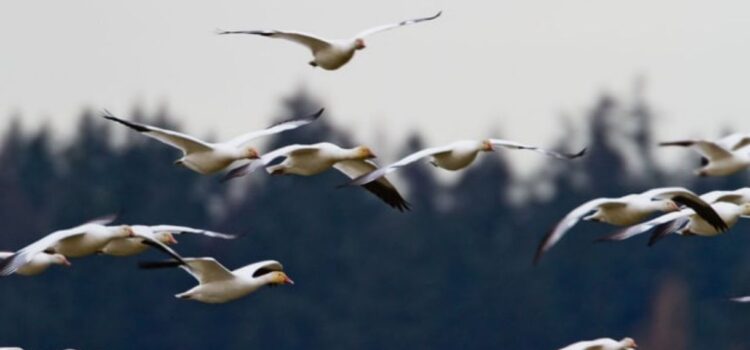
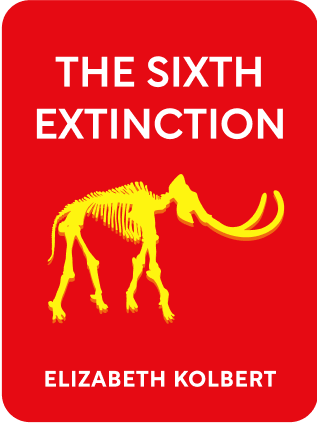
This article is an excerpt from the Shortform book guide to "The Sixth Extinction" by Elizabeth Kolbert. Shortform has the world's best summaries and analyses of books you should be reading.
Like this article? Sign up for a free trial here .
What is species dispersal and how does it affect biodiversity? What role did humans play in spreading animal species across continents?
Species dispersal is the spreading of the species populations from their birthplace to other locations of breeding. It can be both natural (e.g. dispersing a seed via the wind) or human-caused. The human-driven species dispersal may have started as far back as 120000 years ago.
Read about species dispersal and its role in global biodiversity.
Species Dispersal Causes
In the past, the range of many species was limited by geographic barriers such as oceans, rivers, and mountains. Today, however, species are being dispersed widely by humans, with disastrous consequences.
Darwin believed each species originated in one place. It spread by dispersing seed via the wind or it moved under its own power. With a lot of time, any organism could eventually spread widely. However, geographic features like oceans, mountains, and deserts set limits, which explained why flora and fauna on one continent could be different from those on another—they’d evolved separately.
However, Darwin struggled to answer the question of how the original colonizers got started. Also, his theory didn’t explain why fossils of the same types of reptiles and plants were found on different continents. In later years, scientists wondered whether land bridges had once spanned oceans, allowing travel, or whether the continents had once been larger and then separated and shifted. The latter theory suggested there was originally one giant continent, Pangaea.
In the Anthropocene, humans are, in a sense, reuniting the continents into a New Pangaea by dispersing species all around the globe via various means of transportation—and with unprecedented speed. There are no barriers to species’ travel when they hitch rides with humans. As a result, in some regions, non-native (invasive) plants have exceeded native species. At any given time, an estimated ten thousand species are traveling around the world in ships’ ballast water. Our constant reshuffling of species is unraveling millions of years of geographic separation.
Some of This Was Intentional
The human-driven species dispersal may have started as far back as one hundred twenty thousand years ago, when humans left Africa. When they crossed the Bering land bridge and reached North America thirteen thousand years ago, they brought dogs, which they had domesticated. Fifteen hundred years ago, Polynesians carried rats, lice, and pigs to Hawaii.
However, those small-scale species dispersal initiatives pale in comparison to the huge exchange of species—called the Columbian Exchange—that followed Europeans’ discovery of the New World. Groups known as acclimatization societies intentionally spread species to areas where they hadn’t existed before.
For example, in 1890, a New York group imported European starlings, releasing a hundred in Central Park. We now have over two hundred million. (Shortform note: European starlings are considered our worst nuisance bird species, ravaging crops, transmitting diseases to livestock, causing sanitation problems in cities, and forcing out native birds.)
We are still purposefully introducing new non-native species—for instance, for gardens and aquariums. Researchers who track invasive species dispersal say that more non-native species of mammals, birds, amphibians, turtles, and so on are brought into the U.S. as pets than there are native species of these groups.
Meanwhile, accidental imports have grown along with international trade. California is getting a new invasive species every sixty days, while Hawaii gets one every month. In contrast, a new species established itself in Hawaii roughly once every ten thousand years before humans settled there. In North American coastal waters, invasive species have increased exponentially in recent years due to a greater volume of goods being transported at a faster rate.
The introduction of new species has increased local diversity. For example, before humans arrived, Hawaii lacked rodents, amphibians, terrestrial reptiles, and hoofed animals. There were also no ants, aphids, or mosquitoes. However, Hawaii had thousands of its own unique species, many of which are now gone or declining.
In addition, as local diversity has increased, global diversity has declined as plants and animals come into contact with new species and compete with them or become their prey. In a “thought experiment,” scientists calculated that a single megacontinent with all landmasses physically connected would have 66% fewer mammal species and 50% fewer bird species.
The Spread of Invasive Species
The way we’re moving species around the world is a type of Russian roulette—sometimes nothing much happens; other times, catastrophes result.
In the no-harm-done scenario, the new species doesn’t survive because the climate is inhospitable, it can’t find food, or it gets eaten by predators. This probably is what happens most of the time. But in the worst-case scenario, the new species thrives, reproduces, and becomes established. Some might stick around the place where they landed; others might spread wildly.
Japanese beetles are an example of the worst-case scenario. In 1916, they were found in a nursery in New Jersey and, by the following year, had spread over three square miles. They covered seven square miles the next year and forty-eight the year after that. Today they’ve spread south to Alabama and west to Montana.
By one estimate, between five and fifteen invasive species out of every one hundred will become established. Of those, one will be the bullet in the game of Russian roulette, causing havoc.
Invasives that spread wildly often do so because they lack competitors and predators in the new environment. An example is purple loosestrife, a flowering plant that arrived in the northeastern U.S. from Europe in the early nineteenth century.
In its native habitat, many species of beetles and weevils helped to contain it. However, without enemies in the U.S., it has spread coast to coast. In the early 1990s, some of the beetle predators were introduced in the U.S. to control its spread and so far they’ve been effective.
However, introducing further invasives to stop invasives can be another instance of playing Russian roulette—it works in some instances, while in others it’s disastrous. An example of a disastrous predator introduction is the rosy wolf snail. It was introduced in Hawaii in the late 1950s to control the African snail, which had become an agricultural threat. Instead of harassing the African snail, however, the wolf snail attacked native snails—90% of Hawaii’s native snail species are now extinct or in sharp decline
Along with the benefit of escaping their old predators, invasive species often find local species to be easy pickings. An example is the brown tree snake of Papua New Guinea, which was introduced to Guam in the 1940s, probably in military cargo. After wiping out most of Guam’s native bird species, as well as some mammals, it ran out of native victims and now feeds on more recent newcomers.
Introduced pathogens behave the same way—when they find new hosts that lack defenses, they’re deadly. The American chestnut, which dominated deciduous eastern forests in the 1800s, fell victim to a fungus, chestnut blight, probably imported from Japan in the early 1900s.
It killed nearly 100% of the chestnuts—some four billion trees. By virtue of its newness, the chytrid fungus is having a similar effect on amphibians, which have no defense.
Science writer David Quammen has observed that the brown tree snake and other invasives do exactly what humans have done around the world—thrive at the expense of other species.
The New Pangaea: Invasive Species Dispersal
The spread of invasive species is now so prevalent that you can see some of its effects just by looking out your window—for instance:
- Lawn grasses, even Kentucky bluegrass, are introduced species.
- Dandelions, garlic mustard, broadleaf plantain, burdock, and Queen Anne’s lace came from Europe.
- Multiflora rose is an invasive from Asia, as is oriental bittersweet.
One study found that nearly a third of all plant species in Massachusetts are “naturalized newcomers.”
Earthworms are also immigrants from Europe. New England had none before settlers arrived—they’d been wiped out by the last ice age. Earthworms change soil composition by eating leaf litter. Although gardeners like them, they may have contributed to a decline in native salamanders in the Northeast.
Other invasives currently spreading rapidly include:
- The Asian long-horned beetle from China, which feeds on hardwoods.
- The emerald ash borer from Asia, whose larvae have devastated ash trees in the Northeast.
- The zebra mussel from eastern Europe, a freshwater species that attaches to everything, including recreational equipment.
The problem with the spread of invasive species is global. A database in Europe tracks more than twelve thousand species. Even in Antarctica, researchers found that visitors (including other researchers) brought with them over seventy thousand seeds from other continents. A grass from Europe has established itself there. Welcome to the New Pangaea.

———End of Preview———
Like what you just read? Read the rest of the world's best book summary and analysis of Elizabeth Kolbert's "The Sixth Extinction" at Shortform .
Here's what you'll find in our full The Sixth Extinction summary :
- How humans have set in motion a sixth mass extinction
- The 5 mass extinction events that occurred over the last 500 million years
- Why human ingenuity might be able to save the human species from extinction

